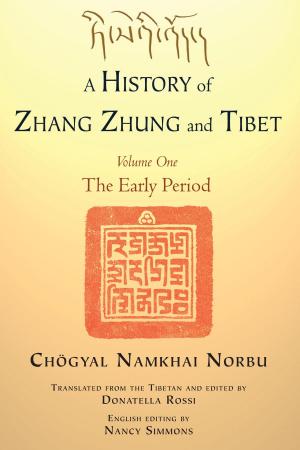| Author: | Anne Davison | ISBN: | 9781370977437 |
| Publisher: | Anne Davison | Publication: | April 10, 2017 |
| Imprint: | Smashwords Edition | Language: | English |
| Author: | Anne Davison |
| ISBN: | 9781370977437 |
| Publisher: | Anne Davison |
| Publication: | April 10, 2017 |
| Imprint: | Smashwords Edition |
| Language: | English |
This book tells the story of the Mughal Empire, which lasted from 1526 to 1857. The early Mughals, who were ethnic Turco-Mongol and descendants of Timur, or Tamerlane, came from Central Asia. They introduced many aspects of Persian culture into India, for example literature, painting and architecture. The Taj Mahal is a surviving example of the particular Indo-Islamic style of Mughals architecture.
Under the first six Emperors, the Mughals experienced expansion and prosperity. The reign of Akbar the Great was unusual for its religious tolerance. Shah Jahan is remembered for the many magnificent buildings he commissioned. The sixth Emperor, Aurangzeb was a conservative Muslim who introduced Sharia Law. Contemporary sources, both biographies and the accounts of European travellers, traders and diplomats, help to put flesh onto the bones of these Emperors.
With the death of Aurangzeb in 1707, the Empire went into a steady decline. This was partly due to the affects of Aurangzeb’s religious policies that had alienated the majority Hindu population. Another reason was the growing power of the Hindu Marathas. But the greatest factor was the increasing presence and influence of the British East India Company.
By the middle of the 19th Century, Mughal power was limited to just Delhi and its environs. Relations between the British and local population had deteriorated. A minor incident broke out in the ranks of the Bengal Native Infantry leading to the Indian Uprising which was brutally put down by the British. The Empire was then dissolved and India came under the direct rule of the British with Queen Victoria as Empress of India.
The Mughal Empire is written in an accessible style that should appeal to the non-academic. Maps, family trees and a Who’s Who should help the reader navigate through this fascinating story.
This book tells the story of the Mughal Empire, which lasted from 1526 to 1857. The early Mughals, who were ethnic Turco-Mongol and descendants of Timur, or Tamerlane, came from Central Asia. They introduced many aspects of Persian culture into India, for example literature, painting and architecture. The Taj Mahal is a surviving example of the particular Indo-Islamic style of Mughals architecture.
Under the first six Emperors, the Mughals experienced expansion and prosperity. The reign of Akbar the Great was unusual for its religious tolerance. Shah Jahan is remembered for the many magnificent buildings he commissioned. The sixth Emperor, Aurangzeb was a conservative Muslim who introduced Sharia Law. Contemporary sources, both biographies and the accounts of European travellers, traders and diplomats, help to put flesh onto the bones of these Emperors.
With the death of Aurangzeb in 1707, the Empire went into a steady decline. This was partly due to the affects of Aurangzeb’s religious policies that had alienated the majority Hindu population. Another reason was the growing power of the Hindu Marathas. But the greatest factor was the increasing presence and influence of the British East India Company.
By the middle of the 19th Century, Mughal power was limited to just Delhi and its environs. Relations between the British and local population had deteriorated. A minor incident broke out in the ranks of the Bengal Native Infantry leading to the Indian Uprising which was brutally put down by the British. The Empire was then dissolved and India came under the direct rule of the British with Queen Victoria as Empress of India.
The Mughal Empire is written in an accessible style that should appeal to the non-academic. Maps, family trees and a Who’s Who should help the reader navigate through this fascinating story.















